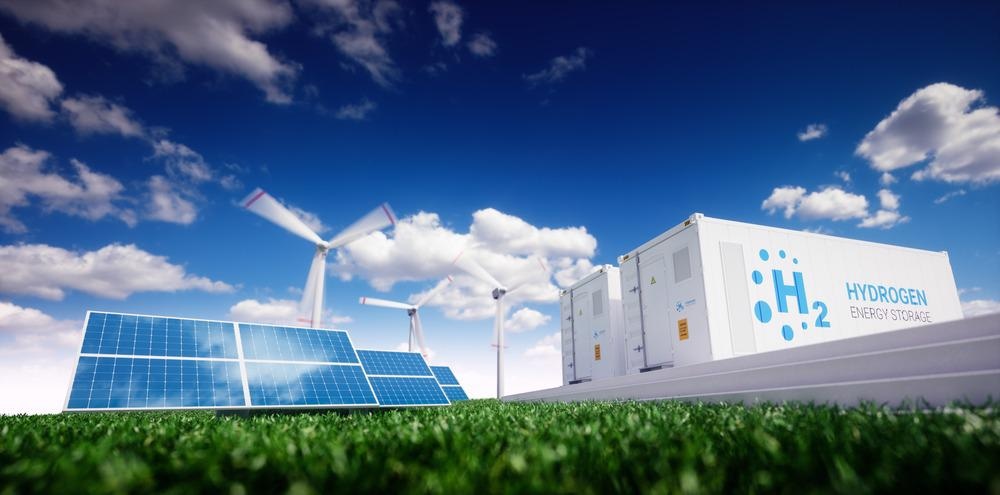Solar panel systems or photovoltaics (PV) are currently considered to be the most promising solution for the future of renewable energy supplies. Solar power systems can derive clean, pure energy from the sun. Now, a team of researchers at Talilinn University of Technology (TalTech), Estonia, have presented their study into the suitability of kesterite monograins in both photovoltaic and water splitting applications. The research was published in the journal Thin Solid Films.

Study: Kesterite Monograins for Solar cells and Water Splitting applications, Image Credit: petrmalinak/Shutterstock.com
One of the issues faced when developing solar panels is the choice of material, as conventional materials with a high bandgap demonstrate poor chemical stability or suffer from limited light absorption. This then necessitates the addition of other more expensive materials such as platinum to prevent decay and act as a co-catalyst; the downside to this is increased economic and environmental cost.
Corresponding author Souhaib Oueslati, a researcher at the Department of Materials and Environmental Technology, TalTech, says, “Direct production of clean and storable chemical fuels such as hydrogen from solar energy is of utmost importance for future sustainable postcarbon energy systems.”
Water splitting applications can convert solar energy directly into chemical energy in the form of hydrogen. However, developing efficient, stable, and affordable materials is a key requirement to realize the full potential of electrochemical hydrogen production via the water-splitting method.
“Kesterites as earth abundant materials with low processing cost and outstanding light absorption properties, are interesting candidates for PV and photoelectrochemical application in particular in the form of monograin membranes,” says Oueslati.
What are Kesterites?
Kesterites are a greenish-black mineral first discovered in Russia’s Yana Basin during the 1950s. They are known for their unique lattice structure where zinc and iron atoms share the same lattice sites. They are also non-toxic, but previous research efforts have been left frustrated by the fact that kesterite-based cells only demonstrated the efficiency of 12%-15%—by comparison, CIG (copper indium gallium) cells demonstrate efficiencies up to 20%.
However, the Estonian team added separately grown crystal absorbers to produce a novel monograin, which was added as a buffer layer. The final cell structure produces a flexible and lightweight solar cell.
“The greatest benefit of monograin technology lies in the simplicity of making unlimited areas and shapes of single crystalline absorbers.” states Oueslati.
In addition to the advantage of growing the material at a relatively high temperature, the chemical in-composition and the size of the powder grains can be easily controlled leading to a uniform distribution of chemical composition and doping concentration after the synthesis
Souhaib Oueslati, researcher at the Department of Materials and Environmental Technology, TalTech
The team believes that a breakthrough in kesterite-based monograin membranes could be set to become one of the cheapest technologies for continuous high-throughput roll-to-roll technology as well as exhibiting resistance to degradation, making it ideal for PV application. Throughout the study, the team specifically evaluated Cu2ZnSn(SxSe1-x)4 monograins.
Potential Application
With the photovoltaic effect commercially used in solar panels for electricity generation, due to its ability to combat greenhouse emissions as a clean energy source, hydrogen production via electrochemical and PV-electrolysis water splitting also offers much promise.
The ability to introduce kesterite monograins for use in solar panels and water splitting applications offers a way to overcome some of the challenges previously mentioned, by increasing efficiencies and reducing costs.
However, in their study the Estonian team discovered that it was still necessary to add a catalyst to the kesterite electrodes in order to maintain certain efficiencies: “Modifying the surface of the kesterite by introducing a hole barrier for the valence band such as SnO2, and adding a catalyst for the electron transfer, is vital for the investigated electrodes,” Oueslati explained.
While the high solar efficiencies were observed in the Cu2ZnSn(SxSe1-x)4 there is the chance for negative potentials as a result of a shift in the flat band potential. Thus, unless the kesterite photocathodes investigated are modified, they do not provide a photovoltage for CE added for a water-splitting device as a result of their too negative band position.
“The disadvantage of the monograin based kesterite technology is the limited devices efficiency which is a general challenge for the kesterite community,” says Oueslati.
So while it seems there is still work to be done to fully develop the kesterite monograins as a scalable solution, the team has high hopes for further development for kesterite-based materials as an alternative material in PV and water splitting applications in the future.
References:
S. Oueslati , M. Pilvet , M. Grossberg , M. Kauk-Kuusik , J. Krustok , D. Meissner , Kesterite Monograins for Solar cells and Water Splitting applications, Thin Solid Films (2021), doi: https://www.sciencedirect.com/science/article/pii/S0040609021004648?via%3Dihub
Disclaimer: The views expressed here are those of the author expressed in their private capacity and do not necessarily represent the views of AZoM.com Limited T/A AZoNetwork the owner and operator of this website. This disclaimer forms part of the Terms and conditions of use of this website.